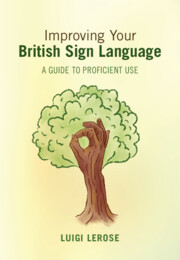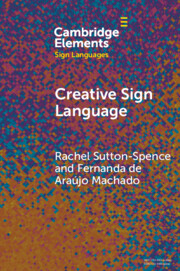Improving Your British Sign Language
This practical, illustrated guide is designed for students who want to improve their use of British Sign Language (BSL), helping them to manage some of the more challenging aspects of BSL learning in an accessible way. Written by a highly experienced sign language speaker, it contains around 750 photos of signs, including examples of common mistakes alongside the corresponding correct signs. Each chapter is accompanied by video demonstrations of all the signs it exemplifies, showing BSL in action. The book is based on the latest research on BSL within theoretical linguistics, since understanding the latest advances in this fast-moving field is known to help improve the skills of non-native speakers. It is intended primarily for self-study, allowing students to work at their own pace on articulation accuracy, recognise the kinds of errors they are likely to make, and gain a better understanding of the visual nature of BSL.
- Includes around 750 photographic examples, featuring examples of common mistakes alongside the correct signs
- Includes numerous practical exercises/activities for readers to improve their BSL production
- Provides an overview of recent theoretical linguistic research in BSL and introduces related theory such as Phonology, Use of Space, and Constructed Action/Depiction step-by-step, making the theory accessible for a wide readership
Product details
January 2025Paperback
9781009124355
252 pages
244 × 170 × 13 mm
0.441kg
Available
Table of Contents
- 1. Introduction
- 2. Sign articulation accuracy
- 3. Use of signing space – pointing, perspective and collocation
- 4. Using constructed action and depiction as part of the creative lexicon
- 5. Conclusion and further exercises.




